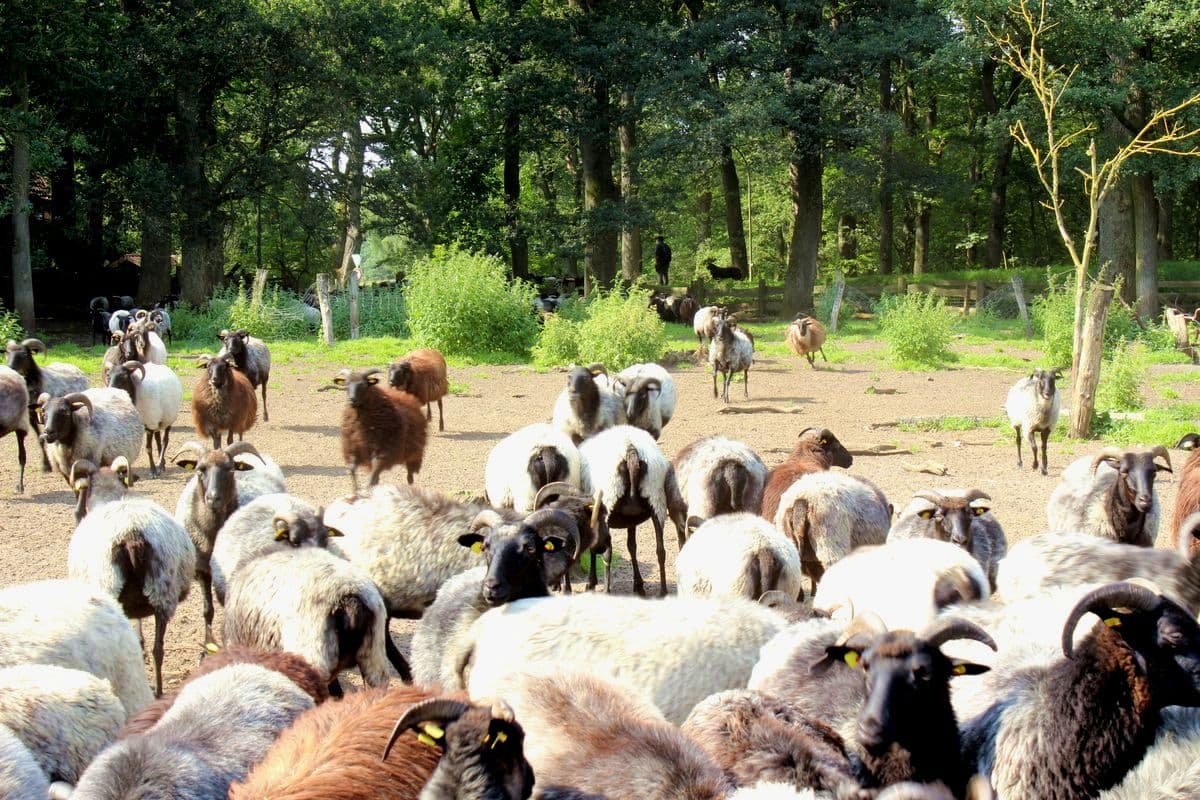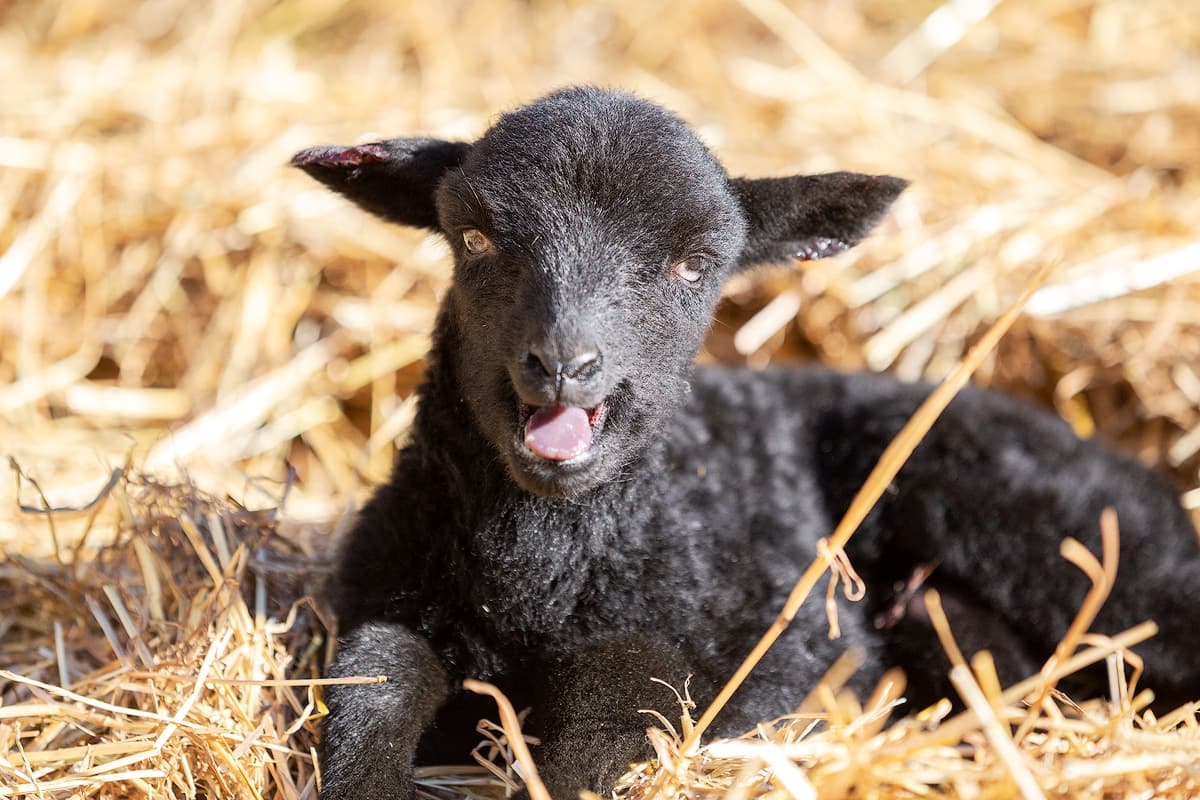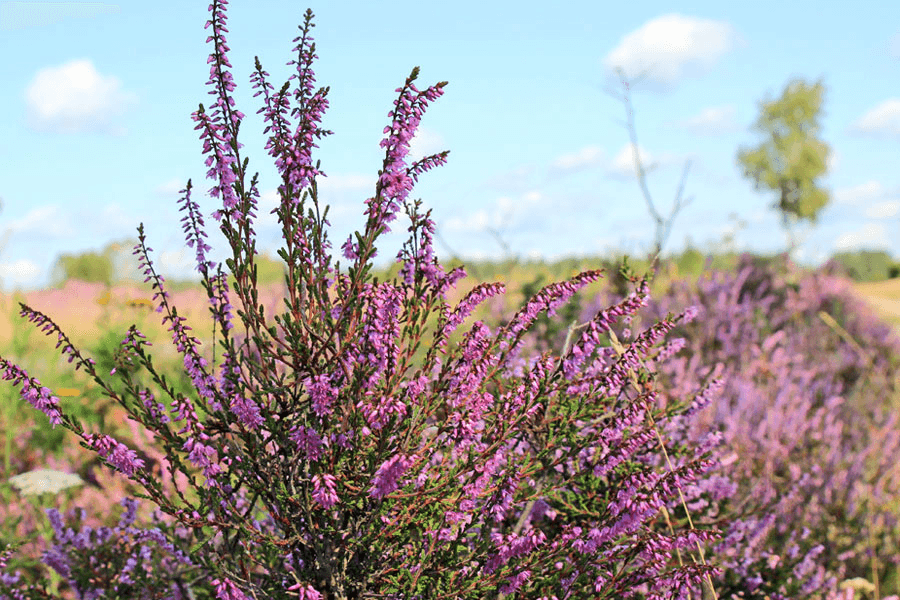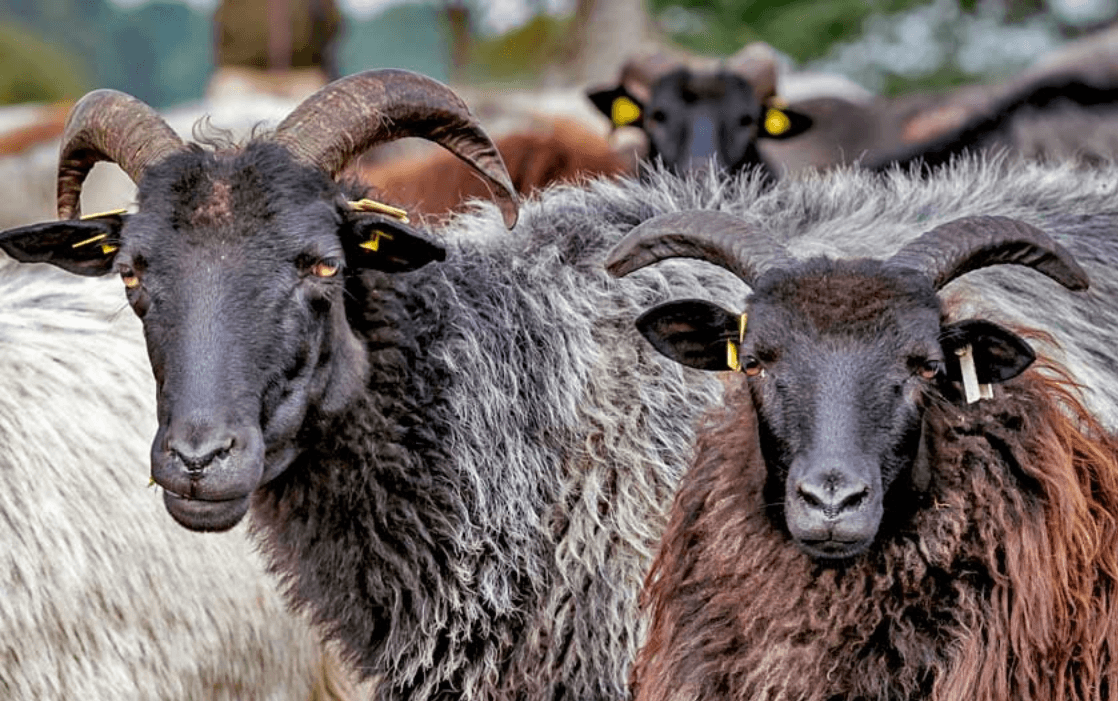

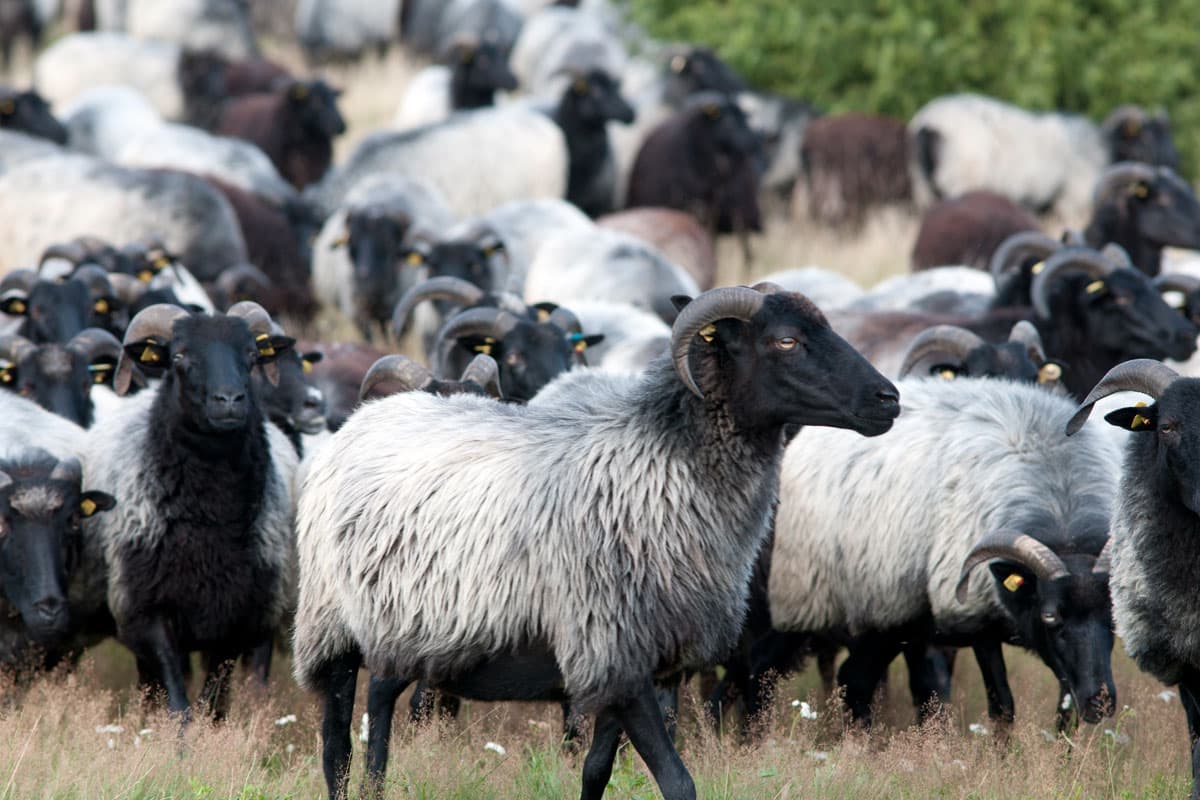
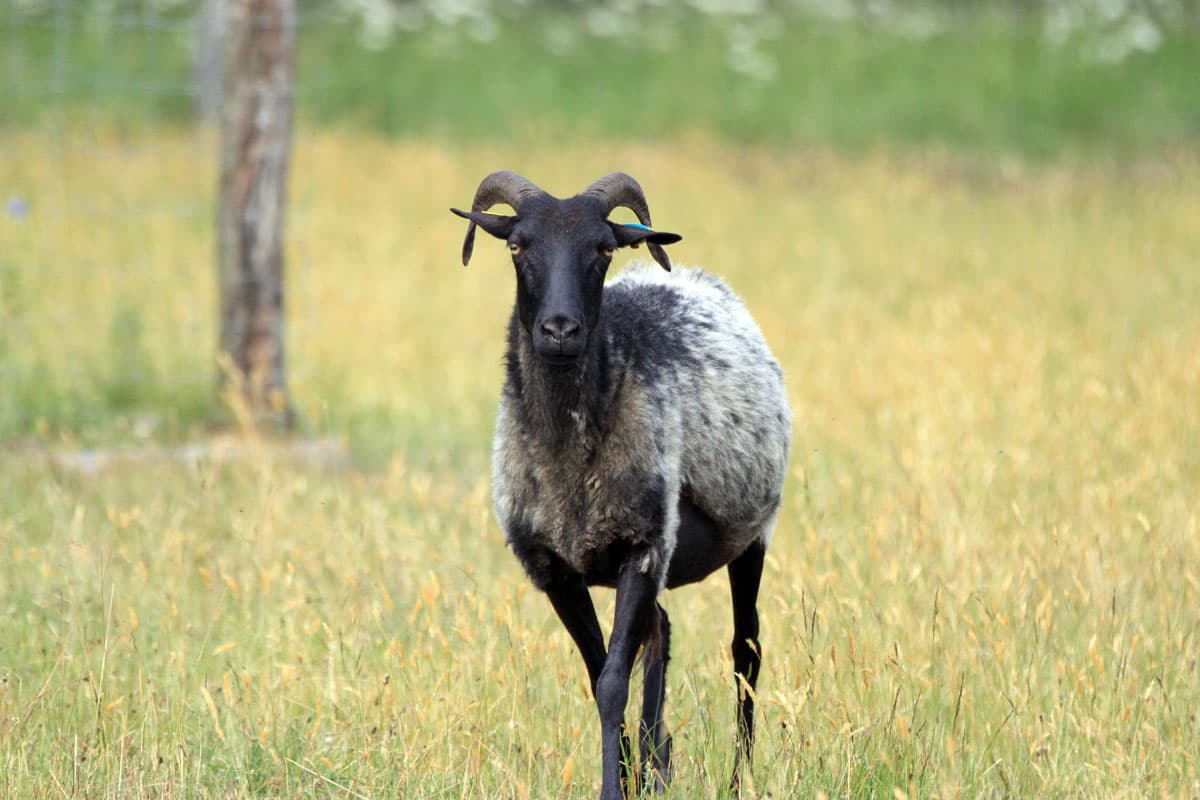
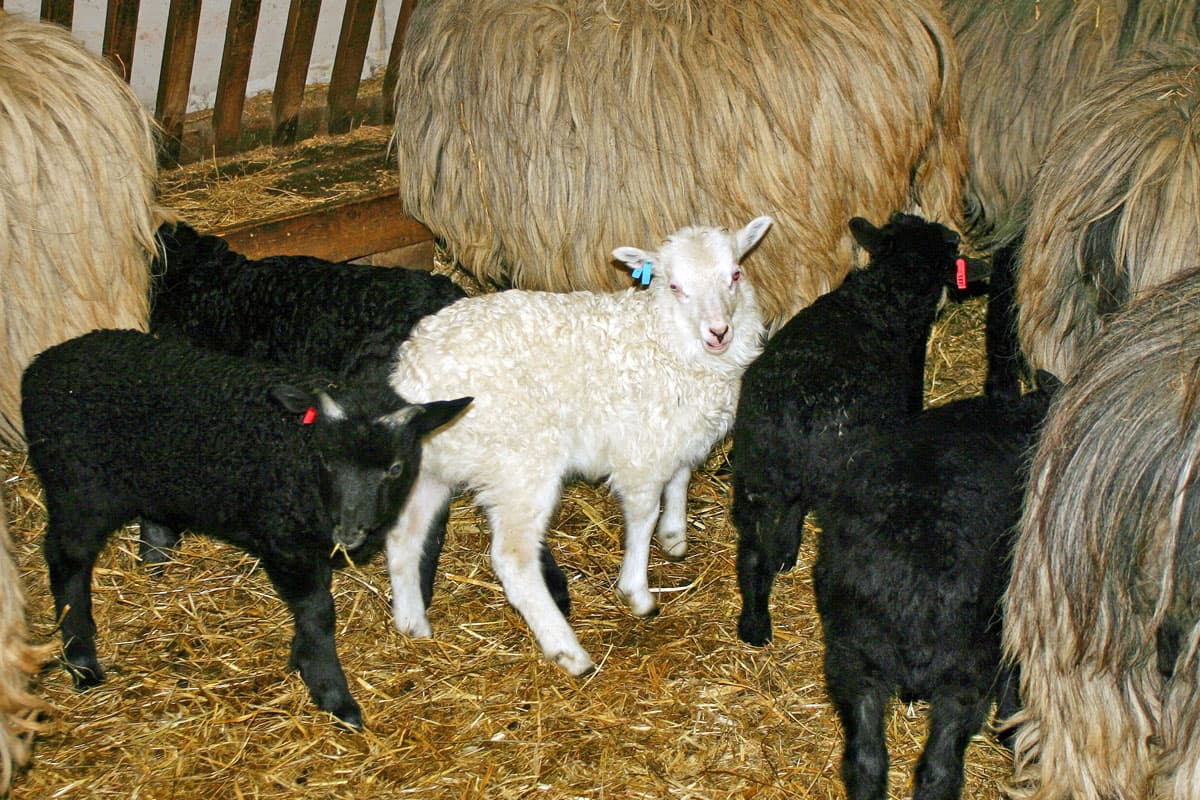
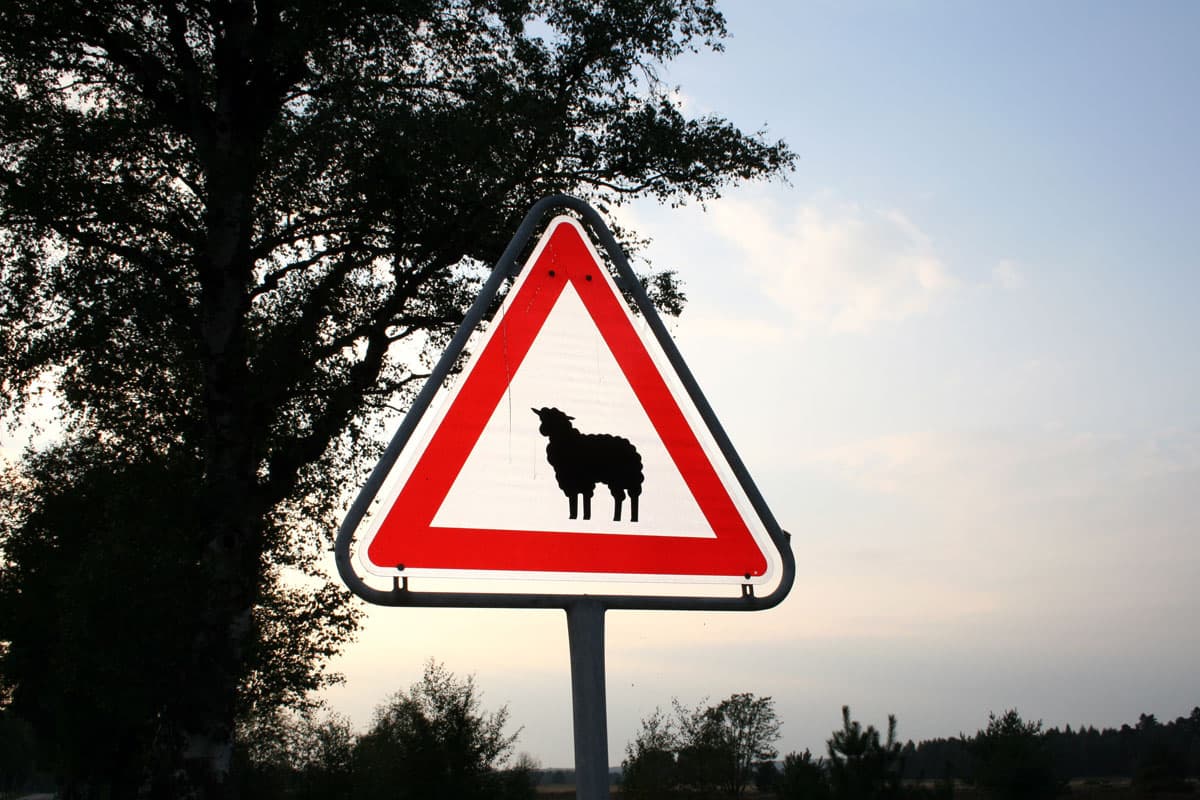
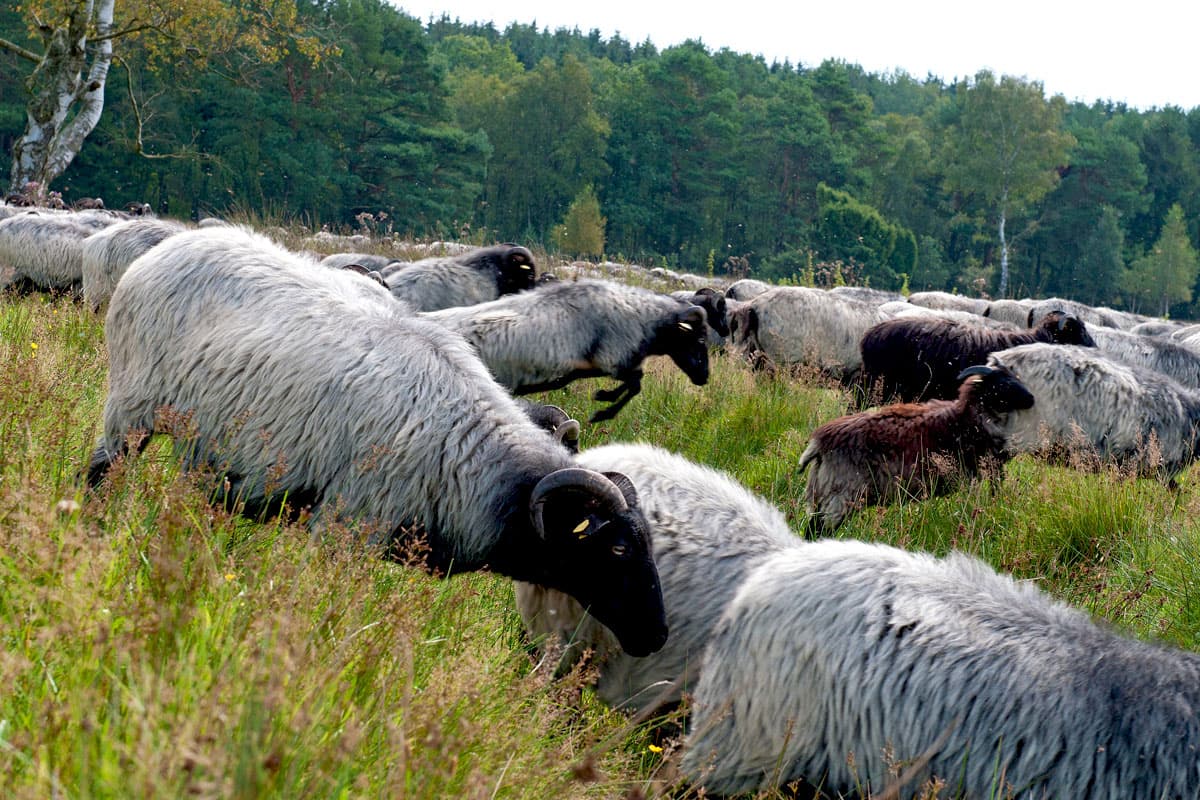
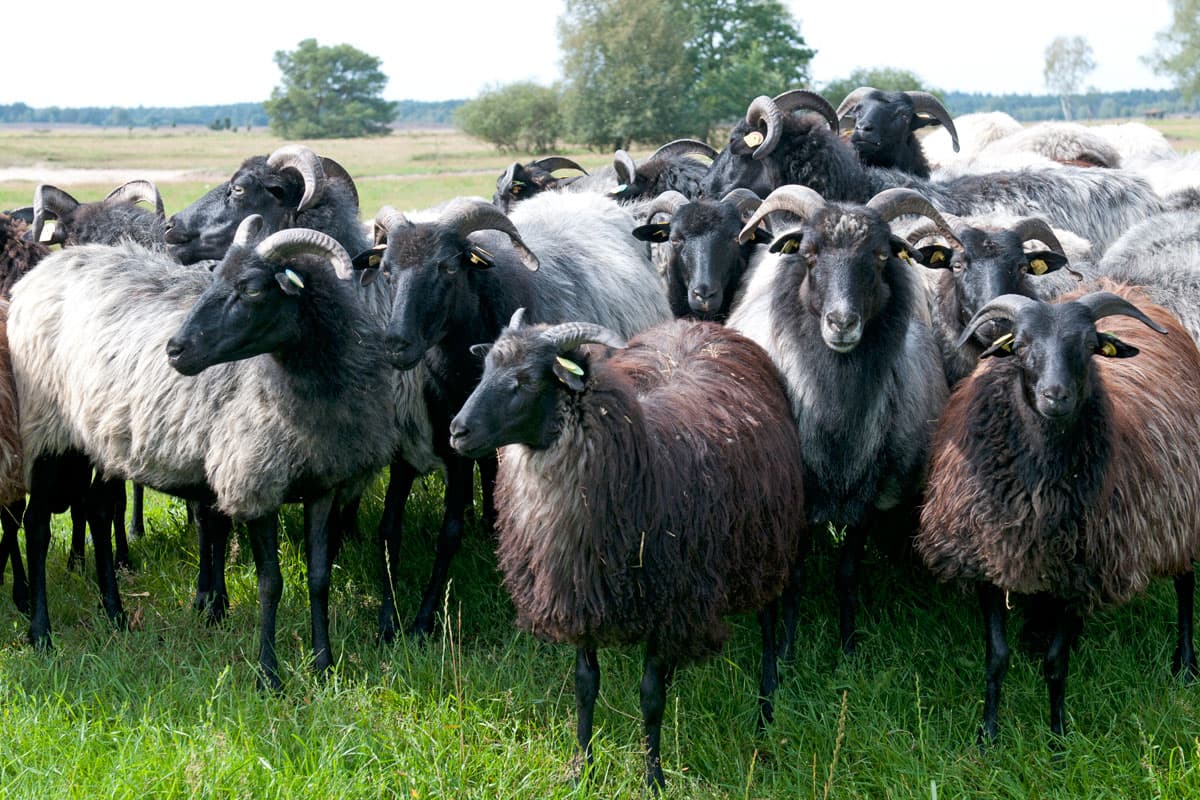
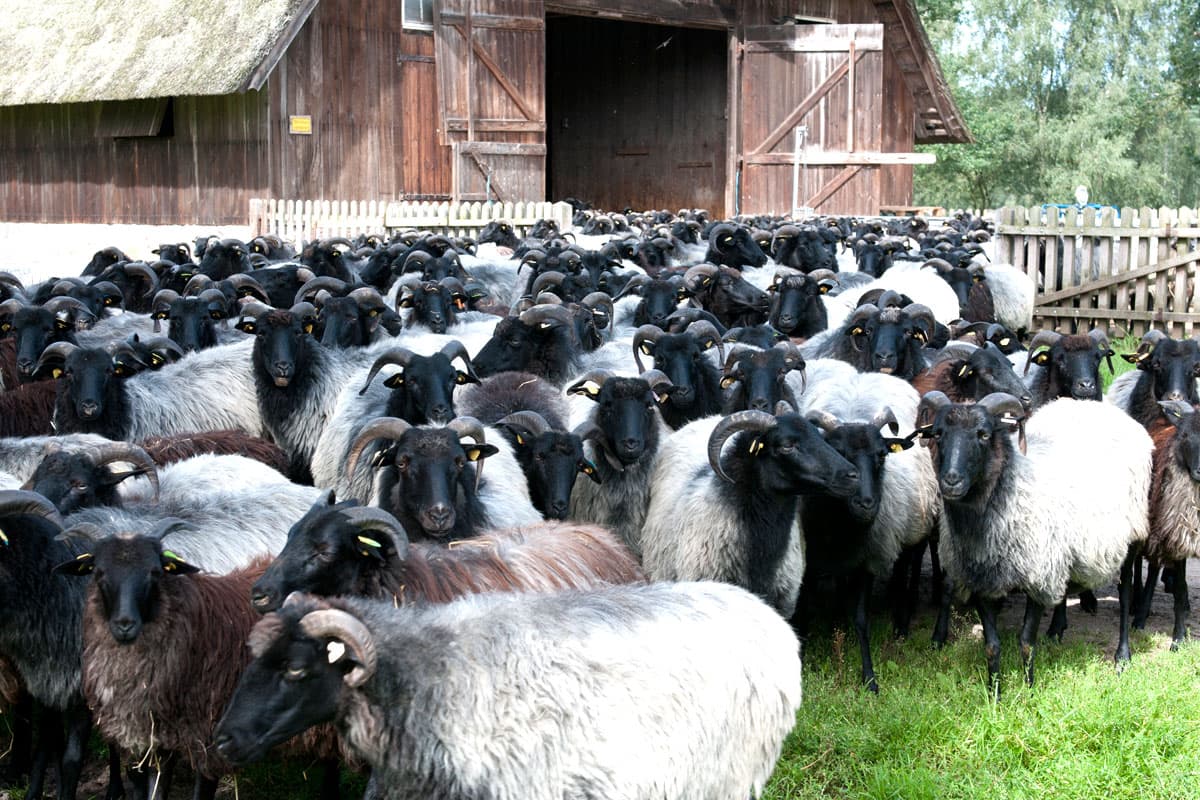
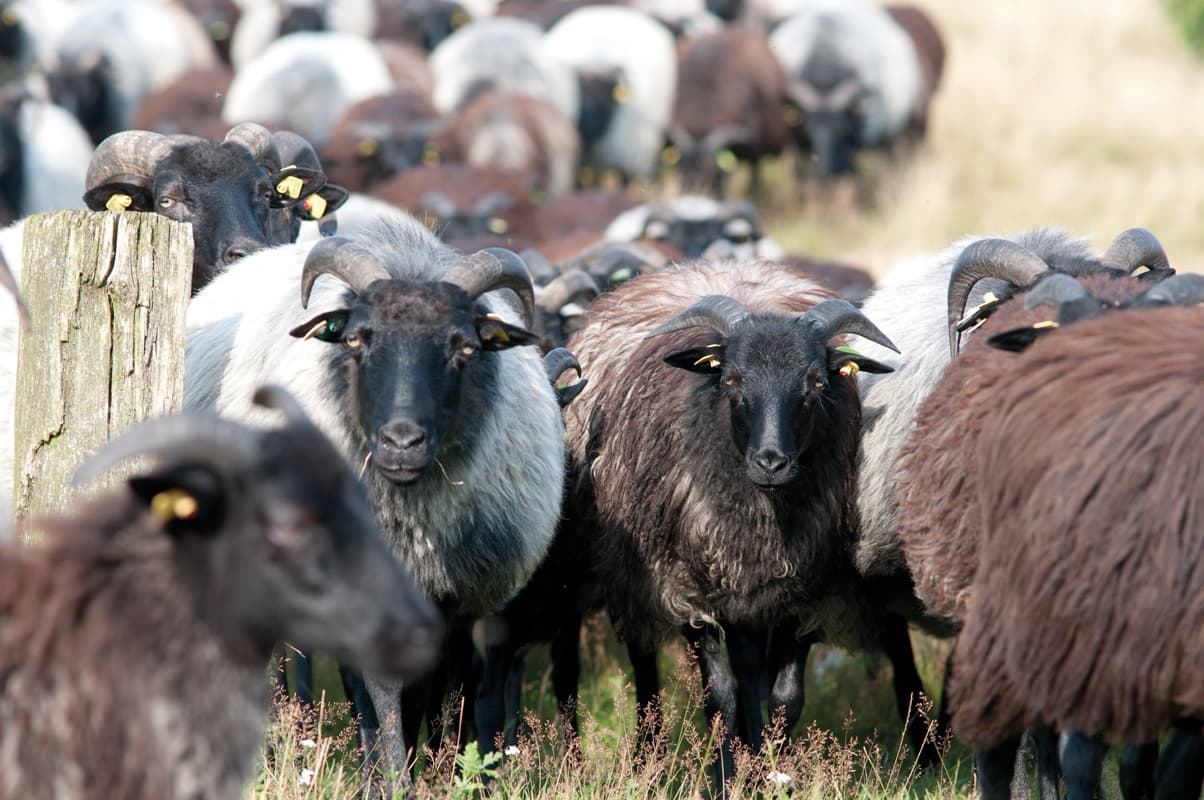
Heidschnucken und die Lüneburger Heide
Die Heidschnucke ist eine alte Landschafrasse, die von den auf Sardinien und Korsika beheimateten Mufflons abstammen soll. Insgesamt ist die Rasse in sechs Unterarten aufgeteilt. Auf den trockenen Heideflächen der Lüneburger Heide lebt seit langer Zeit die "Graue Gehörnte Heidschnucke".Ohne unsere tierischen Landschaftspfleger, die Heidschnucken, könnten die größten Heideflächen Europas nicht erhalten werden.
Heidschnucken - unsere tierischen Landschaftspfleger
Woher stammt der Name "Heidschnucke"?
Der Name Schnucke kommt von "Schnökern" (Naschen), weil die Heidschnucke die Abwechslung liebt und Heidekraut, Gras und Wildkräuter gern verspeist.
Silbergraues Fell mit schwarzem Brustlatz ist das Erkennungsmerkmal
Die Graue Gehörnte Heidschnucke hat ein silbergraues Vlies (Fell) mit einem schwarzen Brustlatz. Männliche und weibliche Tiere sind gehörnt. Im ersten Jahr haben die Lämmer zunächst ganz schwarzes, gelocktes Haar. Später wächst die graue Wolle durch, so dass lediglich die Beine, der Kopf und der Brustlatz der ausgewachsenen Heidschnucken die schwarze Färbung zeigen. Erstmalig wurde 2012 als weltweite Sensation eine weisse Schnucke geboren.
Unsere tierischen Landschaftspfleger
Früher, als es noch riesige Heideflächen gab, waren die Heidschnucken wichtige Woll- und Düngerlieferanten, heute dienen sie vorwiegend als vierbeinige Landschaftspfleger.Die Heidebauernwirtschaft
Zur Zeit der Heidebauernwirtschaft im 19. Jahrhundert verfügte ein Heidehof in der Regel über 500 bis 700 Heidschnucken.
Die ehemals weitläufigen Heidelandschaften der Lüneburger Heide waren ein Produkt der historischen Heidebauernwirtschaft, die sich aus Ackerbau und der Haltung von Heidschnucken zusammensetzte. Die nährstoffarmen Sandäcker der Region konnten nur dann ausreichende Erträge abwerfen, wenn sie eine regelmäßige Nährstoffzufuhr erhielten. Da bis in das 19. Jahrhundert hinein keine mineralischen Dünger zur Verfügung standen, wurden die Heideflächen als Nährstoffquelle genutzt.
Die Heidschnucke als Dünger-Lieferant?
Hier kam den Heidschnucken eine besondere Bedeutung zu. Sie dienten nicht nur der Produktion von Wolle und Fleisch, sondern erzeugten auch wertvollen Stalldung, mit dem die Äcker gedüngt werden konnten. Die Herden wurden jeden Abend in die Ställe getrieben. Die Heidschnucken setzen ihren Dung nicht während des Weidegangs ab, sondern nur während der Rastzeiten. Auf diese Weise konnte der wertvolle Dünger in den Ställen gesammelt werden.
Gemähtes Heidekraut diente als Einstreu für die Ställe. Auch Heideplaggen wurden in den Schafställen ausgelegt. Um die Plaggen zu gewinnen, wurden die Heidepflanzen samt der obersten Bodenschicht mit einer Plaggenhacke, der Twicke, flach abgeschält. Auf diese Weise kamen mit Heidekraut und Humus zusätzliche Nährstoffe in den Stall und schließlich auf die Äcker. Dort konnte nach einer Düngung mehrere Jahre hintereinander Roggen angebaut werden. Bei sinkendem Ertrag wurde ein Jahr lang der genügsamere Sandhafer und darauf ein Jahr Buchweizen angebaut. Es folgte eine mehrere Jahre währende Brachephase, in der die Fläche beweidet wurde. Nach etwa zehn Jahren konnte der Acker wieder bestellt werden, nachdem er erneut mit Plaggenmist aus dem Stall gedüngt worden war.
Das Ende der historischen Heidebauernwirtschaft
Als in der zweiten Hälfte des 19. Jahrhunderts Importe von Schafwolle aus Übersee in Konkurrenz zur heimischen Produktion traten und Mineraldünger für den Ackerbau zur Verfügung stand, verlor die Schafhaltung in Mitteleuropa an Bedeutung. Mit dem Ende der historischen Heidebauernwirtschaft und dem Einsetzen umfangreicher Aufforstungen verschwand mehr und mehr die typische Heidelandschaft in der Lüneburger Heide.
Ziegen unterstützen die Heidschnucken
In jeder Heidschnuckenherde sind auch Ziegen zu sehen. Sie unterstützen die Heidschnucken, da sie noch stärker die Pioniergehöze wie Birken und Kiefern verbeißen können.
Heidschnucken und Bienen in der Heide begünstigen einander
Wenn die Heidschnucken im Spätsommer zur Heideblüte durch die Flächen ziehen, zerreißen sie mit ihren Beinen die Spinnweben im Heidekraut. So können die Bienen ungestört ihren Nektar für den leckeren Heidehonig suchen. Die Bienen wiederum bestäuben das Heidekraut und sorgen so für den Fortbestand der Nahrung für die Schnucken.
365 Tage im Jahr ziehen die Heidschnucken durch die Heideflächen
In der Lüneburger Heide werden die Herden noch traditionell das ganze Jahr über gehütet. Der Schäfer zieht mit seinen Tieren jeden Tag 10 - 12 km durch die Heide.
Insgesamt ziehen über 9.000 Heidschnucken in 13 Herden an 365 Tagen im Jahr durch die Heideflächen der Lüneburger Heide. Wie kann ich die Herden finden? Dazu haben wir ein paar Tipps für Sie zusammengestellt.
Heidschnuckenbraten - ein zarter Genuss
Kein Wunder, dass die Heidschnucken kein Fett ansetzen und sich ihr Fleisch als Diätkost hervorragend eignet. Die vielseitige, wildähnliche Ernährung verleiht dem Heidschnuckenfleisch seinen typischen wildbretartigen Geschmack. Diesen kulinarischen Genuss sollten Sie sich während eines Urlaubs in der Heide nicht entgehen lassen. Das Fleisch der Lüneburger Heidschnucke ist in Europa unter diesem Namen geschützt und darf das Siegel einer geschützten Ursprungsbezeichnung tragen. Die lange, strähnige Wolle dagegen ist nur für grobe Gewebe wie zum Beispiel Teppiche geeignet. Wo kann man in der Lüneburger Heide Heidschnuckengerichte probieren oder das Fleisch erwerben?
Übrigens:
Die Heidschnucken dürfen im Gegensatz zu den Menschen mitten durch die Heideflächen laufen. Damit sind sie leider nicht immer für Sie als Urlauber sichtbar. Bitte bleiben Sie aber auf den Wegen, damit der Naturschutz gewahrt bleibt.
Die Heidschnucken - Fakten:
Name: Heidschnucke (Ovis ammon f. aries)
- Gewicht: 45 bis 60 kg
- Lebenserwartung: 15 Jahre
- Futter: Gräser, Heidekraut, Wollgras
- Produkte: Heidschnuckenbraten, Heidjerknipp, Heidschnuckenrücken, Heidschnuckenragout, Bratwurst, Wurst und vieles mehr
- Größe: Schulterhöhe 50-60 cm


